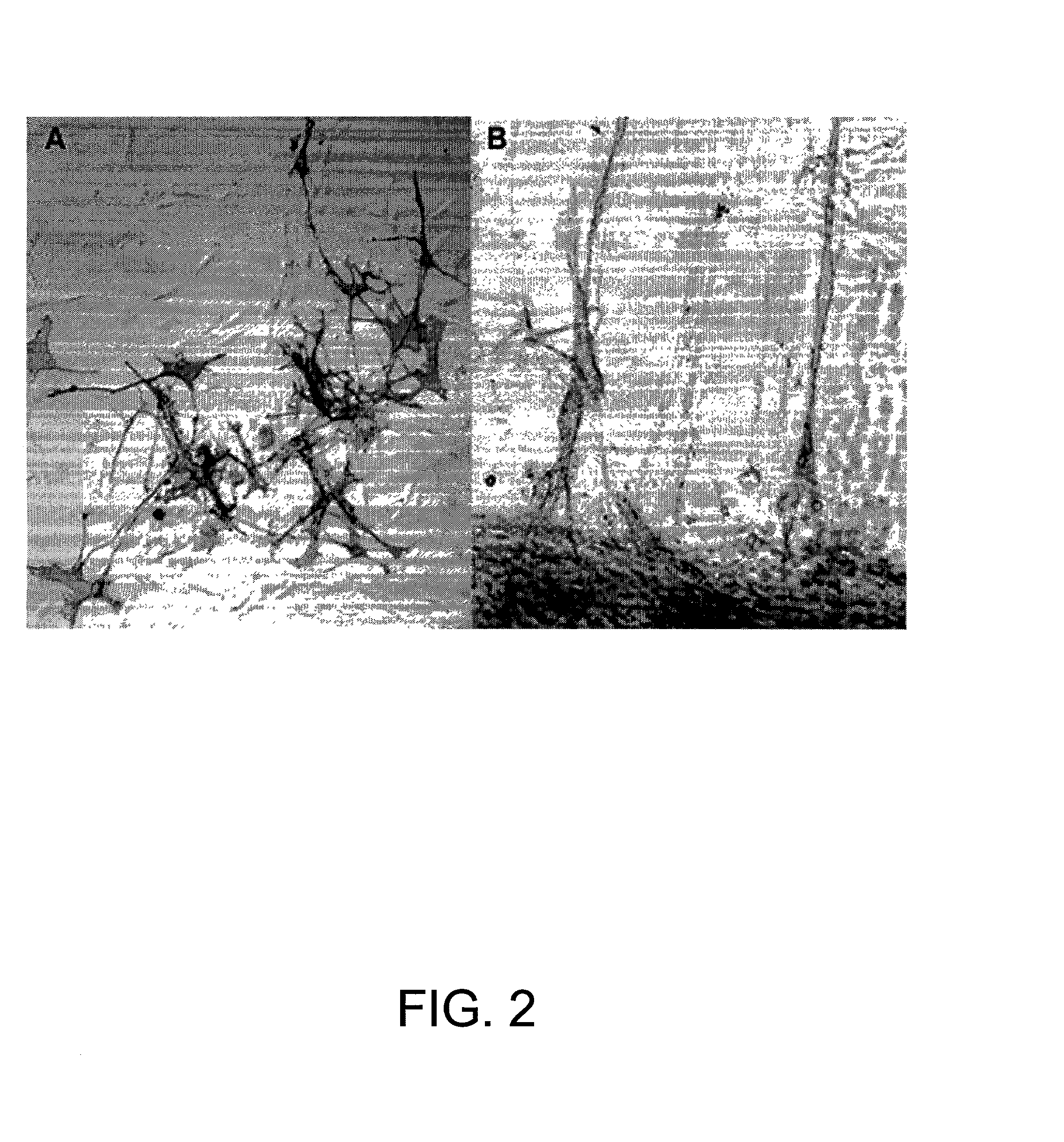Methods of preparing olfactory ensheathing cells for transplantation
a technology of olfactory ensheathing cells and transplantation method, which is applied in the field of isolating ensheathing cells, can solve the problems of unable to demonstrate functional recovery, damage to cells, stressing the remainder, etc., and achieves the effect of efficient purification
- Summary
- Abstract
- Description
- Claims
- Application Information
AI Technical Summary
Benefits of technology
Problems solved by technology
Method used
Image
Examples
Embodiment Construction
[0074] In practice, ensheathing cells are usually isolated from the olfactory bulb of the brain. The present inventors have realised that there is an important and essential distinction between isolating the lamina propria and ensheathing cells originating from the olfactory mucosa and the usual site of isolating ensheathing cells from the olfactory bulb. In particular, for application in human transplantation, biopsy of the olfactory mucosa is a relatively painless procedure which does not affect the sense of smell and is acceptable to patients and research subjects (Fron et al, 1998, Archives of Otolaryngology Head and Neck Surgery 124 861, herein incorporated by reference). Ensheathing cells from the mucosa are therefore proposed as being ideally suited for autologous transplants in patients with brain injury, spinal injury, sensory and motor nerve injuries or after necessary nervous system damage during surgery.
[0075] This invention relates to a method of isolating ensheathing c...
PUM
 Login to View More
Login to View More Abstract
Description
Claims
Application Information
 Login to View More
Login to View More - R&D
- Intellectual Property
- Life Sciences
- Materials
- Tech Scout
- Unparalleled Data Quality
- Higher Quality Content
- 60% Fewer Hallucinations
Browse by: Latest US Patents, China's latest patents, Technical Efficacy Thesaurus, Application Domain, Technology Topic, Popular Technical Reports.
© 2025 PatSnap. All rights reserved.Legal|Privacy policy|Modern Slavery Act Transparency Statement|Sitemap|About US| Contact US: help@patsnap.com



